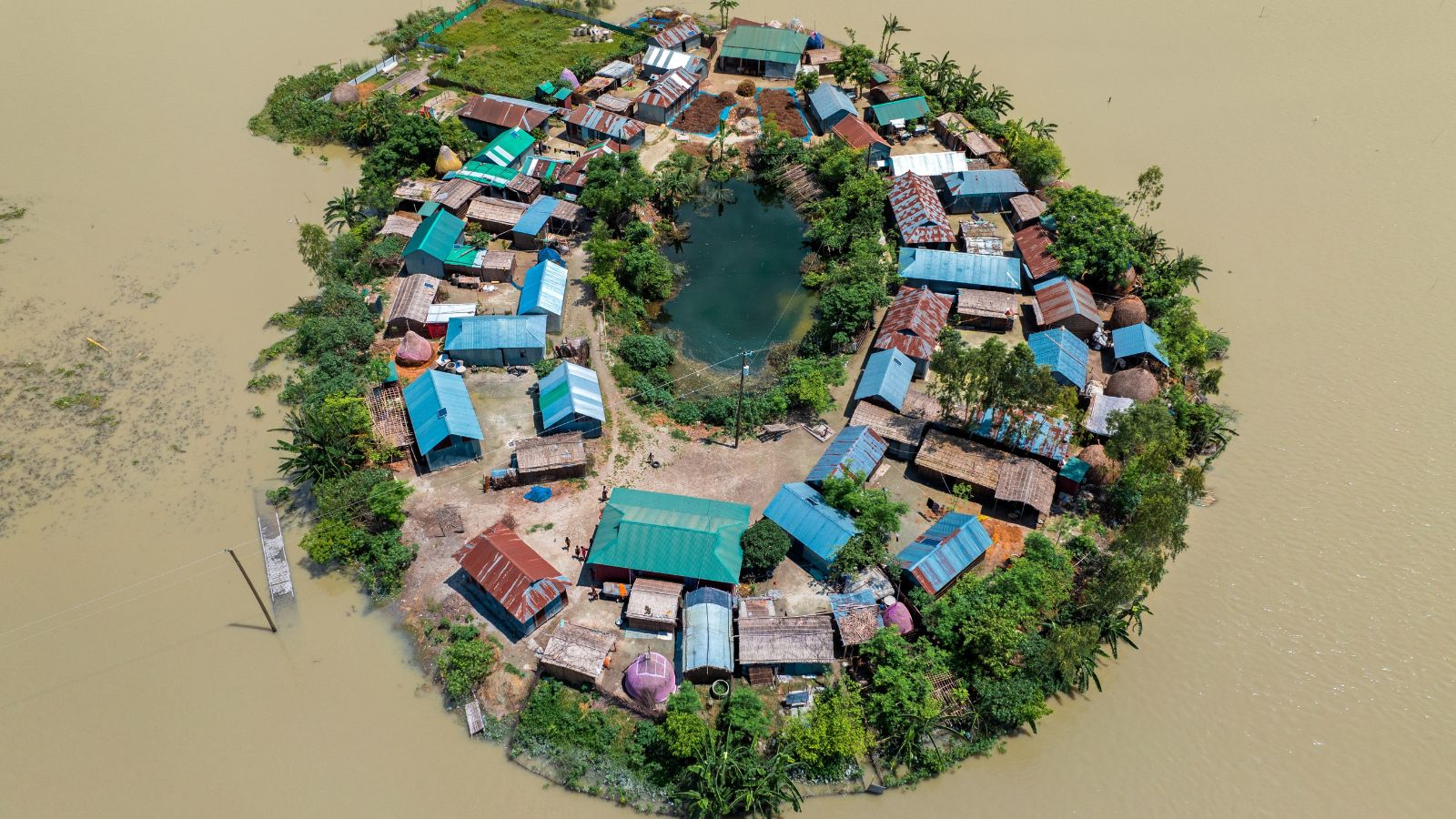Cities are the heartbeat of human progress, bustling with life, innovation, and opportunity. But as they grow, they face unprecedented challenges that threaten their foundation. Urban infrastructure—the backbone of our cities—is under immense pressure from rising populations, climate change, and aging systems. Here’s a look at 17 startling realities that highlight the urgent need for action to secure the future of urban living.
Crumbling Foundations

Stroll through any major city, and you might not notice it immediately, but much of the infrastructure holding these places together is falling apart. In the U.S., thousands of bridges are classified as structurally deficient, and water mains built in the early 1900s are still in use. These systems weren’t designed to handle today’s demands, let alone tomorrow’s. If we don’t act soon, these aging networks could fail catastrophically, with costly and dangerous consequences.
Cities Are Bursting at the Seams

In less than 30 years, nearly 7 out of 10 people will call a city home. That’s a staggering number, especially considering that many urban centers are already struggling with overcrowding. This rapid urbanization means more housing, roads, schools, and hospitals will be needed—fast. But are we ready to build at this scale while ensuring sustainability? Right now, the answer seems to be no.
Cities That Could Sink Beneath the Waves

For coastal cities, the clock is ticking. Rising sea levels, fueled by climate change, threaten places like Miami, Jakarta, and Venice. Jakarta, for instance, is sinking so fast that Indonesia is building an entirely new capital. Scientists predict that 2100 sea levels could rise by as much as three feet, putting millions of people and billions of dollars in infrastructure at risk.
Extreme Weather: The New Normal

Hurricanes, floods, and heat waves aren’t just rare occurrences; they’re becoming regular events. Cities like New York have experienced catastrophic flooding, turning subways into rivers and streets into lakes. Urban infrastructure wasn’t built to withstand such extremes, leaving many areas vulnerable to destruction. Adapting to these changes is no longer optional—it’s a necessity.
Traffic Isn’t Just Annoying, It’s Expensive

We’ve all been stuck in gridlock, cursing under our breath. But did you know traffic congestion costs the U.S. economy $87 billion annually? That’s time and fuel wasted, not to mention the stress it causes. With more cars on the road every day, cities need to rethink their approach to transportation, investing in public transit and smarter traffic management systems.
A World Running Dry

Imagine turning on your tap, and no water comes out. For cities like Cape Town, this almost became a reality with “Day Zero”—the day their water supply would run out. Globally, we’re heading toward a water crisis, with demand expected to outstrip supply by 2030. Aging pipes, wasteful usage, and shrinking water sources are all to blame. It’s time to prioritize solutions like water recycling and conservation.
Power Grids Under Pressure

Urban areas devour energy, and this hunger is only growing. By 2050, energy demand in cities will rise by nearly 60%, putting enormous strain on fragile power grids. Blackouts, like the one Texas experienced during the 2021 winter storm, show how vulnerable these systems are. Transitioning to renewable energy and modernizing power infrastructure is critical to keeping the lights on in the cities of tomorrow.
Broken Public Transit Systems

For millions, public transit is the only way to get around. Yet, these systems are underfunded, outdated, and unreliable in many cities. Delays, breakdowns, and overcrowding are common. When public transit fails, people turn to cars, worsening traffic and pollution. To fix this, cities need bold investments to make transit systems safer, more efficient, and accessible for all.
Breathing in Danger

Air pollution is the silent killer lurking in our cities. It’s responsible for more than 4 million deaths each year, with urban areas being major contributors. Smog-filled skies are a daily reality in cities like Delhi, where pollution levels often reach hazardous levels. Transitioning to cleaner energy, reducing vehicle emissions, and planting greenery can help make urban air breathable again.
The Internet Gap

In today’s world, access to the internet is as essential as access to clean water or electricity. Yet, millions in urban areas, especially developing regions, still don’t have reliable internet. Without it, people are cut off from education, job opportunities, and basic services. Bridging this digital divide will require governments and tech companies to work together to expand infrastructure and affordability.
Drowning in Trash

Cities produce more than 2 billion tons of waste annually, which is expected to double by 2050. Overflowing landfills, polluted rivers, and improper disposal are common in many urban centers. Cities like Mumbai have experienced severe flooding because plastic waste clogs drainage systems. Recycling, composting, and waste-to-energy technologies can help manage this growing problem.
The Invisible Divide

Not all urban residents have equal access to infrastructure. In slums and informal settlements, millions live without necessities like running water, electricity, or proper sanitation. This disparity not only harms those directly affected but also weakens cities. Prioritizing inclusive infrastructure development is key to creating equitable urban environments.
Smart Cities, Smarter Hackers

As cities adopt smart technologies—automated traffic systems, connected utilities, and AI-powered services—they open themselves to cyberattacks. A single hack could shut down an entire power grid or paralyze public transport. Strengthening cybersecurity for these systems is as important as building them in the first place.
A Financial Black Hole

Building and maintaining infrastructure isn’t cheap, and the world faces a $15 trillion gap in funding by 2040. Many cities struggle to find the money to repair crumbling roads, upgrade transit systems, or build new schools. Innovative funding solutions, like public-private partnerships and green financing, are essential to bridging this gap.
Sweltering Cities

Urban areas have become heat traps due to the urban heat island effect, where concrete and asphalt absorb and retain heat. This makes cities hotter than surrounding rural areas, worsening the impacts of climate change. Simple solutions like planting more trees, adding green roofs, and using reflective materials in construction can help cool things down.
Housing: The Growing Crisis

The dream of owning a home is slipping out of reach for many. By 2025, over 1.6 billion people will live in inadequate housing or be homeless. Skyrocketing rents and property prices in cities like San Francisco and Hong Kong have made affordable housing a distant hope. Governments must step up with policies that prioritize housing for all income levels.
Shaky Ground

Millions live in earthquake-prone areas, but much of the urban infrastructure isn’t built to withstand seismic activity. Cities like Istanbul, where 70% of buildings aren’t earthquake-safe, face the threat of devastating loss. Strengthening building codes and retrofitting vulnerable structures can save countless lives when disaster strikes.
Conclusion

The challenges facing urban infrastructure are daunting, but they’re not insurmountable. The key lies in proactive planning, bold investments, and innovative solutions. Cities must prioritize sustainability, resilience, and equity to meet the demands of a rapidly changing world.
The future of urban life depends on the decisions we make today. By addressing these alarming realities head-on, we can build cities that are not only livable but thrive for generations to come. Let’s not wait until it’s too late.
18 Reasons Why People Are Leaving Florida in Masses

Exploring factors that impact the desirability of living in Florida, this list delves into various challenges shaping residents’ experiences. From environmental concerns like rising sea levels to economic factors such as fluctuating job markets, these issues collectively contribute to a nuanced understanding of the state’s appeal.
18 Reasons Why People Are Leaving Florida in Masses
